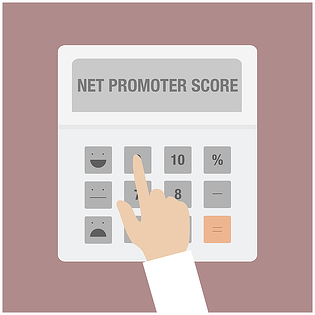Whether it's gross sales, conversion rates or other statistics, every business has its own ways of measuring success. New digital tools only increase the methods by which the average business can crunch the numbers to see how well they're doing.
Of course, some of those metrics are more valuable than others. The best ones are able to calculate not only your present-day success, but also your long-term viability. That's the beauty of the Net Promoter Score. Developed by business experts Richard Owen and Laura Brooks, the Net Promoter Score is designed as a simple calculation that forecasts a company's future profitability and success years into the future.
The scoring methodology has since been embraced by major international companies, including Apple, but the Net Promoter Score can be applied accurately and easily to businesses of any size. This simple computation can offer a quick, accurate look at how your customers are embracing your brand, and how well those consumers are not only buying your products and services, but promoting your brand as well.
How to Calculate Your Net Promoter Score
The data used to calculate a Net Promoter Score revolves around a single piece of consumer data: How likely they are to recommend your company to someone they know. Consumers are asked to plot their answer on a scale of zero to 10, with zero meaning "not at all likely" and 10 meaning "extremely likely."
Your company then divides those responses into three categories:
- Promoters (score of 9 or 10): Promoters are very satisfied consumers who have developed a loyalty to your brand. You can count on them for repeat business and referrals to other consumers. This leads to increased sales and a broadening consumer base over the long run.
- Passives (score of 7 or 8): Passive consumers are satisfied with their experience with your company, but they have not been won over. Their loyalty is questionable, and while they might lead to repeat business in the future, they are less likely to recommend your business and are more open to trying out your competitors. Passives have a neutral effect on your company's long-term viability.
- Detractors (scores between 0 and 6): Detractors comprise the portion of your consumer base that had a negative experience with your company. They are unlikely to make repeated purchases from you and are more likely to spread bad word-of-mouth that damages your brand and inhibits the growth of your consumer base.
Once consumers have been designated to one of these three categories, the calculation is easy. Simply ignore the passive consumers and subtract the percentage of detractors from the percentage of customers labeled as promoters. The result is a score that can range from -100 to +100. This is your Net Promoter Score. It's as simple as that.
As an example: Your company categorizes its consumers and comes up with 60 percent promoters, 30 percent passives and 10 percent detractors. In this scenario, you would subtract 10 from 60, yielding a score of +50. An score of +50 or higher is considered to be very strong, resulting in an optimistic view of your company's future.
To gather feedback to compute your Net Promoter Score, a number of options can be used. If you're a smaller company, you can solicit feedback directly from consumers through your sales representatives. But if you're a larger operation, online surveys can be used. Survey requests can be send out via email or even displayed on your website, making them easy for consumers to fill out. Meanwhile, the feedback is entered directly into your database.
Use of the Net Promoter Score offers three key benefits:
1. It's Easy to Score
Businesses professionals don't want to waste too much time fussing about metrics and trying to dissect their company's performance in new ways. Metrics are sometimes complex to compute, not to mention the time it takes to gather the necessary data. The Net Promoter Score is about as simple as calculations go--you don't need to be good at math to do it, but it offers a reliable, accurate view of your company.
2. It Provides Useful Feedback
The first time you calculate your Net Promoter Score, you have a useful picture of how your company is doing. In most cases, that score will prompt your company to seek methods of improvement, thus improving your Net Promoter Score. More than anything, this score helps you sharpen your company's focus on the customer experience you deliver. If you seek additional feedback from consumers, you'll have an easy time understanding which aspects of your business to improve. As you implement changes based on the feedback, your initial Net Promoter Score will serve as a baseline for those efforts.
3. It Helps You Chart Your Improvement Over Time
As you work to implement those changes and improve the consumer experience, your Net Promoter Score can help you chart that improvement. Recalculating your score periodically will help show your progress in improving the customer experience, even if that means mistakes and regressions. When you're using this score, you'll know exactly how your customers feel, and what their experience says about your company's long-term prospects.
The customer experience is the backbone of any company's long-term viability, and it needs to be protected and nurtured at all times. For that reason, every business should keep an eye on their own Net Promoter Score.
is the Head of Growth @ Lean Labs. He has over a decade of professional experience in Internet Marketing and his top skill is surrounding himself with passionate designers, developers, and inbound marketers.
Kevin has been married 10 years, the father of 3, and he recently relocated to Costa Rica. He enjoys reading professional development books, cycling and motorcycling. Connect with Kevin on
Linked In.





